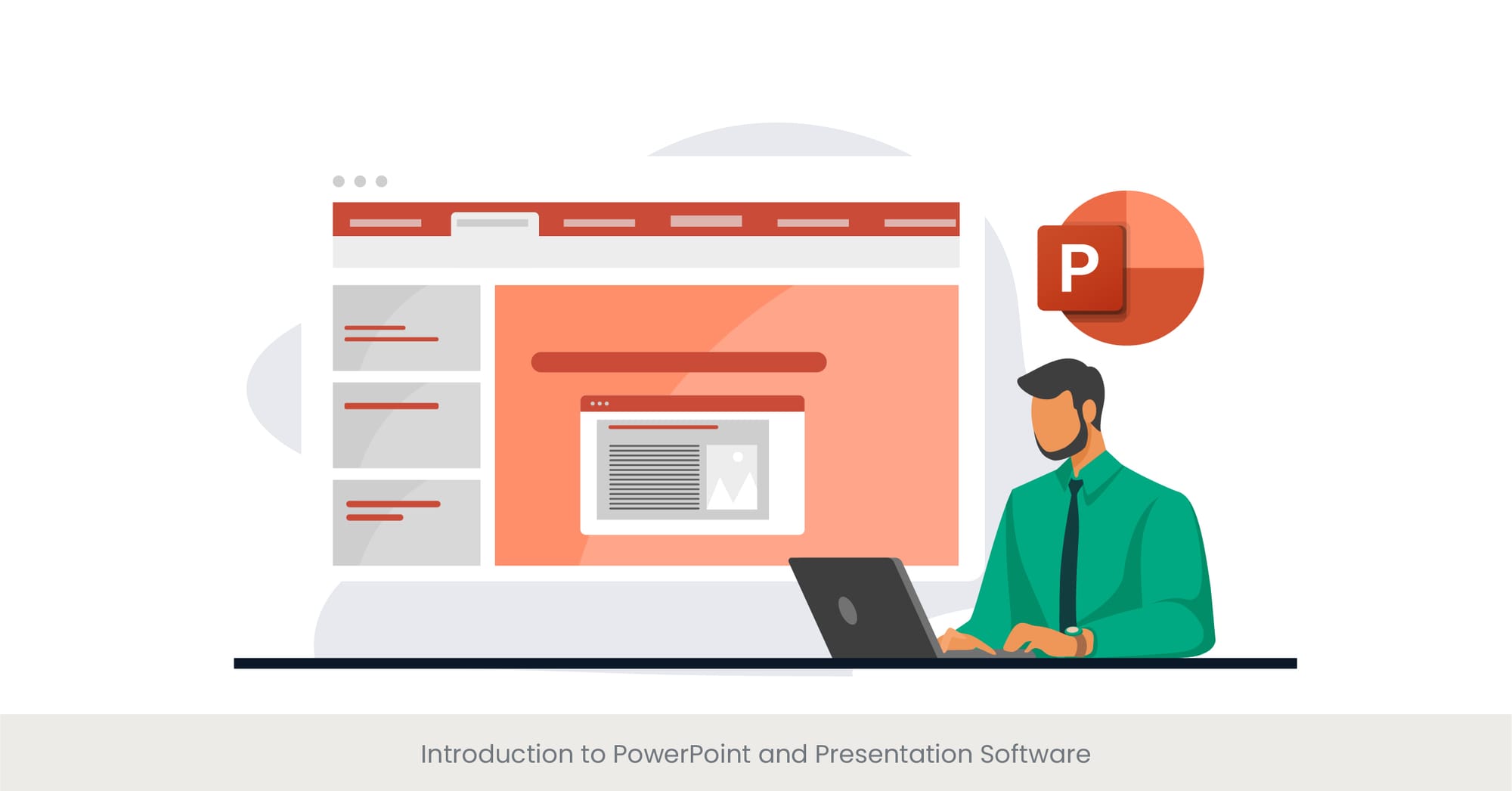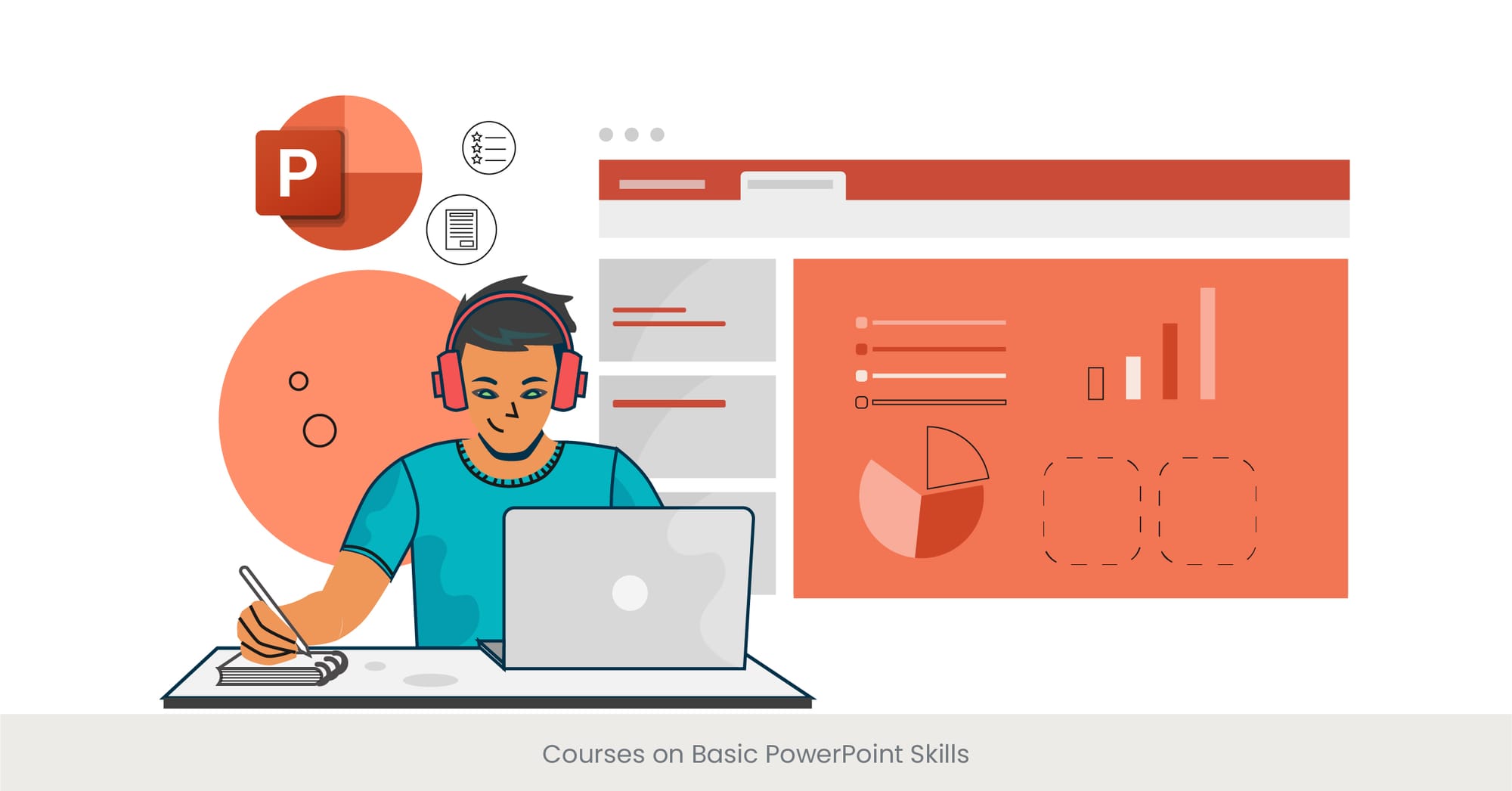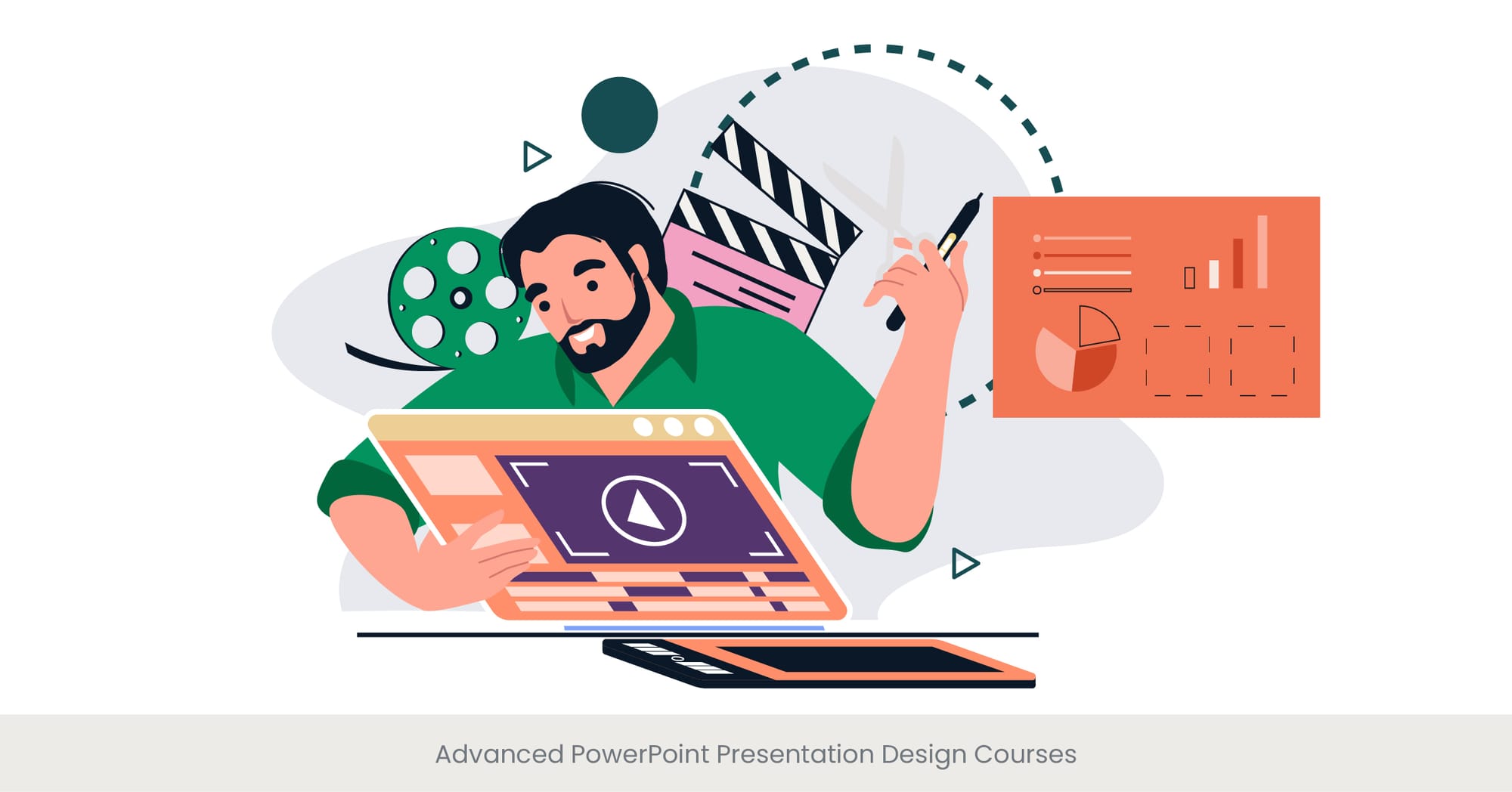
Introduction to PowerPoint and Presentation Software

Engaging Overview of Presentation Powerhouses
PowerPoint has long stood as a pillar in the realm of presentation software, offering users a robust platform to convey ideas, data, and narratives effectively. Whether in academic settings, corporate boardrooms, or casual meet-ups, Microsoft PowerPoint provides an intuitive design interface that caters to a broad spectrum of users—from novices to seasoned professionals. This introduction delves into the essence of PowerPoint and its role alongside other significant presentation tools like Google Slides and Apple's Keynote, highlighting their unique features and user demographics.
Historical and Functional Insights
Since its inception in 1987, PowerPoint has evolved from simple slide creation software to a comprehensive presentation tool that integrates multimedia, dynamic formatting, and collaboration features. As part of the Microsoft Office software suite, it has developed in tandem with other applications like Microsoft Word and Excel, enhancing its utility with seamless compatibility and increased functionality. This background section will explore the development of presentation software over the decades, focusing on how technological advancements and user feedback have shaped their current forms.
PowerPoint in Action: Real-World Applications
Across various industries, PowerPoint's application sees no bounds—from educational lectures that demand clarity and engagement to business presentations that require professionalism and polish. Notable case studies include its use in landmark corporate presentations such as product launches and quarterly reports, where the ability to integrate charts, videos, and animations make it an indispensable tool. Furthermore, its role in educational sectors for both teaching and student presentations underscores its adaptability and widespread acceptance.
Establishing Credibility Through Research
Research and studies underscore the effectiveness of PowerPoint as a communication tool. For instance, a 2019 survey by Toastmasters International highlighted that over 70% of professionals consider good PowerPoint skills crucial for career advancement. Further insights can be gleaned from educational research, which illustrates how visual aids significantly enhance learning outcomes, making PowerPoint an essential tool in educational and professional settings alike.
Courses on Basic PowerPoint Skills

Navigating the Basics: A Gateway to Effective Presentations
For those new to presentation design or looking to refine their skills, basic PowerPoint courses serve as an ideal starting point. These courses are designed to introduce users to the fundamental aspects of Microsoft PowerPoint, covering everything from creating slides and inserting text to more complex operations like embedding multimedia elements and custom animations. This introductory paragraph highlights the importance of mastering these foundational skills to ensure that presentations are not only visually appealing but also communicatively effective.
Exploring Educational Pathways
The journey to becoming proficient in PowerPoint often begins with structured courses that focus on its core functionalities. Many educational institutions and online platforms offer courses tailored to beginners, aiming to instill confidence and competence in handling various presentation tasks. These programs often include practical exercises that mimic real-world scenarios, helping learners to understand not just the "how" but also the "why" behind each feature. This section will delve into the structure of these courses, discussing their curriculum and the pedagogical approaches employed.
Real-World Impact of Basic PowerPoint Training
The practical benefits of basic PowerPoint courses are evident across various professional and academic settings. For instance, students who undertake these courses demonstrate a marked improvement in their presentation grades and overall communication skills. In the corporate world, employees who have undergone such training often find themselves better equipped to handle client briefings and internal presentations, leading to more engaging and persuasive communications. This paragraph will showcase examples from both education and business to illustrate the tangible advantages of such foundational training.
Validating the Benefits Through Expert Opinions and Studies
The efficacy of basic PowerPoint training is further supported by academic studies and expert testimonials. Educational research indicates a significant correlation between structured training in presentation software and improved performance in communication-related tasks. Additionally, testimonials from course participants and educators often highlight the enhanced clarity and professionalism in presentations post-training. This segment will reference authoritative sources that substantiate the value of basic PowerPoint courses in fostering effective presentation skills.
Advanced PowerPoint Presentation Design Courses

Elevating Skills to Professional Levels
For individuals looking to elevate their presentation abilities beyond basic functionality, advanced PowerPoint presentation design courses offer a pathway to mastery. These courses delve deeper into the sophisticated aspects of presentation design, including the strategic use of visual aids, advanced animation techniques, and the integration of data visualization tools. This introduction sets the stage for exploring how these advanced courses are designed to transform competent users into expert designers, capable of crafting presentations that captivate and communicate effectively.
Deep Dive into Course Content and Structure
Advanced courses typically build on the basics by introducing participants to complex features of PowerPoint and other sophisticated design software like Adobe Illustrator and After Effects for enriching presentations. These programs often cover topics such as template design, brand consistency, and the psychological impact of color and typography. This paragraph explores the curriculum of advanced PowerPoint courses, highlighting how they are structured to challenge students and encourage innovative thinking and design.
Case Studies: Advanced Courses in Action
The real-world implications of advanced PowerPoint skills are vast, impacting sectors such as marketing, education, and corporate communications. For example, marketing professionals have used advanced skills acquired from these courses to create impactful campaign pitches that significantly increase customer engagement and sales. Educational professionals utilize these skills to produce more interactive and informative lectures. This section will include case studies that illustrate the practical applications of advanced skills in real-life scenarios, demonstrating their effectiveness and versatility.
Supporting Evidence from Industry Leaders and Academic Research
The importance of advanced presentation design skills is echoed by industry leaders and supported by academic research. Studies have shown that presentations designed with advanced techniques are more likely to retain audience attention and achieve their communication objectives. Industry experts often cite the necessity of continuous learning and improvement in presentation skills as critical to professional growth. This paragraph will reference studies and quotes from leading professionals that validate the importance of advanced PowerPoint presentation design courses.
Certifications and Accredited Programs in Presentation Design

Establishing Credibility with Certified Expertise
In a world where professional qualifications can significantly enhance career prospects, certifications in presentation design stand out as valuable assets. These certifications, offered through accredited programs, validate an individual's expertise in using presentation tools like Microsoft PowerPoint effectively and creatively. This introductory paragraph discusses the importance of these certifications in establishing credibility and demonstrating a commitment to professional development in the field of presentation design.
Insight into Accreditation Processes and Program Offerings
Accredited programs in presentation design are often developed in collaboration with industry leaders and academic institutions to ensure they meet professional standards and industry needs. These programs may range from short courses offering specific skills, such as advanced animation techniques or data visualization, to comprehensive programs that cover a wide array of presentation-related topics. This section delves into the variety of programs available, the accreditation process, and the criteria that define a quality certification in presentation design.
Transformative Impact on Careers
Certifications in presentation design can be transformative for professionals, opening doors to new job opportunities and providing a competitive edge in various fields. For instance, a certified presentation designer may be preferred for roles in corporate training, marketing, and even executive management, where top-notch presentation skills are crucial. This paragraph will explore how these certifications have helped individuals achieve greater success and recognition in their careers by providing tangible examples from various industries.
Validation through Success Stories and Statistical Data
The value of obtaining a certification in presentation design is not just anecdotal but is also supported by statistical data and success stories from certified professionals. Surveys conducted by educational institutions and professional bodies often show a significant increase in employment rates and salary levels for individuals who hold such certifications. This final paragraph will cite specific studies and testimonials that highlight the career advancements and professional achievements facilitated by these certifications, reinforcing their importance and impact.
Online Resources and E-learning for PowerPoint Skills

Harnessing the Power of Digital Learning
In today's digital age, online resources and e-learning platforms offer unprecedented access to education in presentation design, particularly in mastering PowerPoint. These platforms provide flexible learning opportunities that cater to individuals of all skill levels, from beginners looking to grasp the basics to professionals seeking to enhance their presentation prowess. This introduction emphasizes the convenience and breadth of learning options available online, making it easier than ever to improve PowerPoint skills.
Exploring the Landscape of Online Learning Platforms
The e-learning landscape is rich with diverse offerings, including massive open online courses (MOOCs), webinars, and tutorial series hosted on platforms like Coursera, Udemy, and LinkedIn Learning. These platforms collaborate with top universities and industry leaders to offer courses that cover everything from basic PowerPoint techniques to advanced presentation design courses. This paragraph delves into the specifics of these platforms, discussing their features, course structures, and the benefits of learning remotely.
Real-World Applications and Success Stories
Online learning has proven its effectiveness through numerous success stories and practical applications. For example, professionals who have taken online PowerPoint courses often report significant improvements in their presentation capabilities, leading to better project outcomes and enhanced workplace performance. Additionally, many e-learning platforms include interactive elements such as peer reviews and real-time feedback, which mimic traditional classroom environments and enhance learning experiences. This section will provide examples of how online courses have practically benefited users in various professional settings.
Backing Up Claims with Data and Expert Opinions
The efficacy of online learning for PowerPoint skills is backed by data from educational researchers and endorsements from corporate trainers. Studies show that online learners can achieve a level of proficiency comparable to or sometimes superior to traditional learning environments, thanks to the adaptability and personalized pace of online courses. This final paragraph will cite specific studies and include expert opinions that underscore the strategic advantages of using online resources for learning PowerPoint.
Workshops and Interactive Training Sessions

Interactive Learning Environments for Hands-On Experience
Workshops and interactive training sessions are invaluable for individuals looking to enhance their PowerPoint skills in a dynamic and practical setting. These sessions provide hands-on experiences that facilitate active learning and immediate feedback, which are crucial for mastering complex software functionalities and design principles. This introduction highlights the significance of interactive learning environments in developing advanced presentation skills through direct engagement and practice.
The Structure and Benefits of Interactive Workshops
Interactive workshops are often structured to offer intensive, focused training in specific aspects of PowerPoint and presentation design. These sessions may include live demonstrations, group projects, and individual assignments that encourage participants to apply their learning in real-time. This background paragraph explores the typical format of these workshops, the variety of topics they cover, and how they are tailored to meet the needs of different skill levels from beginners to advanced users.
Illustrating Success Through Participant Experiences
The impact of these workshops is best illustrated by the experiences of past participants, who often achieve remarkable improvements in their presentation capabilities. For instance, marketing professionals have used skills gained from interactive PowerPoint workshops to create more compelling campaign presentations, while educators have enhanced their teaching methods by incorporating more engaging visual content. This section will share success stories and testimonials that demonstrate the practical benefits and real-world applications of learning through interactive sessions.
Research and Testimonials Validate Effectiveness
The benefits of interactive training sessions are not just anecdotal; they are also supported by educational research and participant testimonials. Studies have found that interactive learning environments can significantly improve technical skills and creative abilities in using PowerPoint, leading to higher retention rates and greater satisfaction among learners. This concluding paragraph will reference specific research findings and include quotes from training experts and participants that attest to the effectiveness of workshops and interactive training sessions in enhancing PowerPoint skills.
Corporate Training Programs for Effective Use of PowerPoint

Tailored Training for Enhanced Corporate Communication
Corporate training programs dedicated to PowerPoint aim to refine the presentation skills of employees, enhancing their ability to communicate effectively within the business environment. These programs are carefully tailored to the needs of the company, focusing on areas such as creating persuasive business presentations, integrating brand elements consistently, and utilizing advanced features of PowerPoint to convey complex information clearly and compellingly. This introduction emphasizes the importance of specialized training in fostering a workforce capable of leveraging PowerPoint to its fullest potential.
Insights into Corporate Training Curriculum
The curriculum of corporate PowerPoint training programs is designed to address the specific challenges faced by businesses in various sectors. These might include modules on effective data presentation, the use of visual aids to support business arguments, or techniques for engaging diverse audiences. This section explores the structured approach of these training programs, highlighting how they are adapted to meet the evolving needs of modern businesses and the role of executive buy-in in ensuring their success.
Real-World Impact and Corporate Case Studies
The effectiveness of corporate training programs in PowerPoint can be seen in numerous case studies across industries. For instance, a multinational corporation reported a noticeable improvement in the quality and impact of its internal presentations after employees underwent a series of targeted training sessions. Additionally, these programs often lead to better alignment between marketing and sales teams, as they learn to create cohesive presentations that accurately represent the brand. This paragraph will provide examples of businesses that have seen tangible benefits from investing in PowerPoint training for their staff.
Supporting Evidence from Surveys and Business Reports
The value of corporate training programs in PowerPoint is further supported by business surveys and analytical reports. Research indicates that companies that invest in presentation training see a return in terms of improved communication effectiveness, higher employee confidence, and more successful sales pitches. This section will cite specific studies and include feedback from HR professionals and business leaders that underscore the strategic importance of PowerPoint training in corporate settings.
Integrating Multimedia and Interactivity in Presentations

Enhancing Engagement Through Advanced Features
Integrating multimedia and interactivity into presentations significantly enhances the engagement and retention of information by audiences. This approach leverages tools such as video, audio, animations, and interactive polls within PowerPoint to create dynamic and memorable presentations. This introductory paragraph sets the stage for understanding the transformative power of multimedia elements in making presentations not just informative but also captivating.
Technological Foundations and Creative Implementations
The backbone of integrating multimedia into PowerPoint involves understanding both the technical capabilities of the software and the creative possibilities it unlocks. From embedding high-definition videos that illustrate key points, to incorporating audio clips that set the tone or emphasize messages, the range of multimedia features available in PowerPoint is extensive. This section delves into the techniques for effectively incorporating these elements, ensuring they enhance rather than detract from the core message of the presentation.
Showcase of Successful Multimedia Integration
Real-world examples of successful multimedia integration are abundant across various industries. For example, educational institutions often use interactive elements like quizzes and animations to maintain student interest and participation during lectures. Similarly, businesses employ embedded videos and real-time data feeds in their presentations to keep stakeholders engaged and informed. This paragraph will highlight case studies and examples where multimedia and interactivity have been key to achieving communication goals.
Validation from Industry Studies and Expert Opinions
The efficacy of using multimedia in presentations is well-supported by industry studies and expert opinions. Research indicates that presentations featuring multimedia elements can increase audience engagement by up to 50% compared to text-only slides. Furthermore, experts in presentation design advocate for the strategic use of these tools to ensure that they serve the presentation’s objectives effectively. This concluding paragraph will reference specific studies and include expert insights that affirm the benefits of integrating multimedia and interactivity in PowerPoint presentations.
Tips and Tricks from Industry Experts

Leveraging Expert Advice for Superior Presentations
Gleaning insights from industry experts can dramatically improve the quality and impact of PowerPoint presentations. These professionals, who have honed their skills over years of experience, offer a wealth of knowledge in presentation design, ranging from simple tweaks to major strategic overhauls. This introduction highlights the value of learning directly from experts to enhance presentation skills and ensure that every slide tells a compelling story.
Expert Strategies for Effective Presentation Design
Industry experts often share specific tips that can transform an average presentation into a standout performance. Key strategies include the use of minimalistic design principles to avoid clutter, the strategic placement of key elements to draw attention, and the incorporation of storytelling techniques to connect with the audience emotionally. This paragraph delves into these and other expert recommendations, providing a deeper understanding of how they contribute to more engaging and effective presentations.
Illustrative Examples of Expert Tips in Action
The application of expert tips is best illustrated through real-world examples where these strategies have been successfully implemented. For instance, a renowned TED speaker might share how adjusting the pacing of slides and integrating audience questions transformed their presentation’s reception. Similarly, a corporate trainer could discuss the benefits of using customized templates and consistent branding to enhance professional communication. This section will showcase specific instances where expert advice has been effectively applied in various presentation contexts.
Research and Testimonials Reinforce Expert Advice
The effectiveness of these expert tips is not only anecdotal but is also backed by research and testimonials from professionals who have applied them. Studies show that following expert advice on presentation design can lead to higher engagement rates, improved information retention among audiences, and more persuasive communication. This paragraph will reference such studies and include testimonials from users who have experienced significant improvements in their presentation skills as a result of adhering to expert advice.
Future Trends in Presentation Software and Design

Anticipating the Evolution of Presentation Tools
As technology advances, so too does the landscape of presentation software and design. Emerging trends are shaping the future of how professionals create and deliver presentations, incorporating new technologies like artificial intelligence, augmented reality, and real-time collaboration tools. This introduction sets the stage for exploring the cutting-edge developments that are poised to redefine the standards of effective presentations.
Innovations Driving Change in Presentation Design
The forefront of innovation in presentation software includes the integration of AI to automate design choices and suggest content based on best practices, and the use of AR to create immersive presentation experiences. Moreover, cloud-based platforms are enhancing collaboration among teams, allowing for seamless updates and feedback across global networks. This section delves into these technologies and others, discussing their potential to enhance presentation effectiveness and user engagement.
Examples of Emerging Technologies in Use
Real-world applications of these emerging technologies demonstrate their potential impact. For instance, companies are beginning to use AR in presentations to give life-like demonstrations of products and processes that engage and inform audiences in ways previously not possible. Additionally, AI-driven analytics tools are being used to adapt presentations in real-time based on audience reactions, optimizing engagement and comprehension. This paragraph will highlight specific examples of how cutting-edge technologies are being implemented in presentations today.
Validating Trends with Industry Insights and Forecasts
The trajectory of presentation software and design is increasingly influenced by these technological advancements, as evidenced by industry reports and expert forecasts. Studies suggest that the incorporation of advanced technologies into presentation tools will become standard practice within the next decade, significantly enhancing the way information is conveyed and received. This concluding paragraph will reference industry insights and future forecasts that support the ongoing evolution in presentation software and design.
Frequently Asked Questions (FAQs)
How do you become a presentation designer?
To become a presentation designer, start by learning the basics of presentation software like PowerPoint, then advance your skills through specialized courses and workshops. Gaining certifications in presentation design can also bolster your credibility and professional profile.
Which course is best for presentation skills?
The best course for presentation skills depends on your current skill level and goals. For beginners, basic PowerPoint courses are recommended, while advanced courses are ideal for those looking to master sophisticated design techniques.
What are the 4 principles of presentation design?
The four principles of presentation design are clarity, simplicity, consistency, and engagement. These principles help create presentations that are easy to understand, visually appealing, cohesive, and capable of keeping an audience engaged.
Are presentation designers in demand?
Yes, presentation designers are in high demand, especially in fields such as marketing, corporate training, and event management, where effective communication and professional presentations are critical.
How to learn PowerPoint skills?
PowerPoint skills can be learned through various online courses, interactive workshops, and training programs offered by educational institutions and professional training organizations. Practicing with the software and exploring its different features is also essential.
How can you improve your skills in Microsoft PowerPoint?
Improving your skills in Microsoft PowerPoint involves regular practice, attending advanced training courses, learning from industry experts, and staying updated with the latest software updates and features.
What is the best PowerPoint training?
The best PowerPoint training typically includes comprehensive courses that cover both basic and advanced skills, offer hands-on projects, and provide insights from experienced designers. Look for accredited programs that offer certifications.
How can I improve my presentation skills course?
Enhance your presentation skills course by integrating interactive elements, real-world case studies, expert guest lectures, and providing access to the latest tools and technologies in presentation software.
What are the benefits of integrating multimedia in presentations?
Integrating multimedia in presentations helps to capture the audience's attention, improves information retention, and makes the communication of complex data more accessible and engaging.
What future technologies are likely to impact presentation software?
Future technologies that could impact presentation software include artificial intelligence for automated design assistance, augmented reality for immersive presentations, and real-time collaboration tools for enhanced team integration.



%20(1).jpg)
%20(1).jpg)


